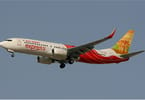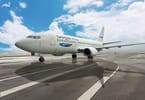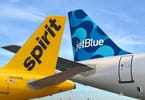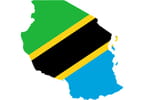Changi Airport Group (CAG) is tapping on expanding its connectivity and strengthening airline partnerships as key to riding on Asia’s aviation growth potential, as it lays the foundation for even longer term infrastructure developments within its growth strategy. And, CAG’s strong participation at this year’s World Routes forum in Chicago, USA signifies efforts by one of the region’s most connected air hubs to continue to expand Singapore Changi Airport’s network – through building a robust portfolio of airlines, maintaining strong collaborations and backing their growth aspirations.
Set at the backdrop of Asia’s burgeoning economies, CAG’s major infrastructure developments, that include Changi Airport’s fourth terminal, a new iconic lifestyle destination and the mega Changi East development – will continue to ensure that Changi Airport is well-placed to cater to more passenger and aircraft movements in the decades ahead.
In the first seven months of 2014, Changi Airport recorded 31.8 million passenger and 199,900 aircraft movements, a 1.3 per cent and 2.1 per cent increase respectively, compared to the corresponding period last year. On the cargo front, airfreight shipments were stable at 1.07 million tonnes for the same period.
Changi Airport’s top five country markets are Indonesia, Malaysia, Australia, Thailand and China. In terms of passenger traffic, its top five cities are Jakarta, Kuala Lumpur, Hong Kong, Bangkok and Manila.
Changi Airport welcomed four new airlines this year, including Lucky Air (January); Uzbekistan Airways (April); Spring Airlines (April); and VietJet Air (May). The latest addition – MIAT Mongolian Airlines will be joining Changi Airport’s family of airlines from September 24, 2014. Changi Airport has established new links to Tashkent in Uzbekistan and the Chinese cities of Guiyang, Lanzhou and Xi’an with the Mongolian capital of Ulaanbaataar joining this week with the MIAT Mongolian Airlines launch.
The new operations of Lucky Air and Spring Airlines further strengthen Changi’s connectivity into China. In the past three years it has enhanced its network with the addition of eleven new city links in China alone: Guiyang, Jinan, Lanzhou, Lijiang, Ningbo, Nanchang, Nanning, Taiyuan, Tianjin, Wuhan and Wuxi. Singapore is connected to 31 Chinese cities, making Changi Airport the most connected airport in Southeast Asia to China.
The Uzbekistan Airways operation, which launched on a twice weekly basis in April 2014, is Changi’s first regular link into Central Asia and will be complement by the new twice weekly MIAT link into Mongolia. Apart from fostering stronger tourist flows between Singapore and Mongolia, this new link is expected to also create more business and investment opportunities between Mongolia and Southeast Asia.
Ethiopian Airlines commenced a thrice-weekly service from Singapore to Addis Ababa in December 2013. The cooperation between Ethiopian Airlines and Singapore Airlines, both members of Star Alliance, not only connects the two countries but on a broader scale, connects Southeast Asia and Southwest Pacific to the entire Eastern and Central Africa region. This cooperation has further strengthened Singapore’s air hub position.
In its strategy to support its airport partners, CAG also announced a wide-ranging Growth and Assistance Incentive (GAIN) programme in June 2014, with a financial commitment of S$100 million, poised to collectively strengthen the Singapore air hub. Over the year, CAG will be progressively rolling out strategic measures to lower airlines’ costs, boost passenger traffic and improve operational efficiency, as we highlighted earlier this month (see ‘Airlines to GAIN at Changi from Long-Haul and Transfer Traffic Boost’).
Changi is also growing Asia’s fly-cruise segment and demand for cruise holidays. In May 2014, CAG, Singapore Tourism Board (STB) and luxury cruise-liner Princess Cruises announced a tripartite collaboration to leverage on Singapore’s strategic advantage to effectively tap fly-cruise traffic from across the globe and serve as a cruise hub for Asia. In tandem, CAG has also been actively collaborating with airlines and travel agents on marketing campaigns to promote fly-cruise packages in markets such as China and India.
Another strategy has seen CAG establish ties with the Japanese Prefecture of Okinawa with the launch of 14 direct non-stop charter services between Singapore and Okinawa from September 2014 to January 2015. This follows the signing of a Memorandum of Understanding between both parties in March 2014, where both partners had expressed their commitment to strengthen tourism and trade flows between Okinawa and Singapore, as well as other countries in the region.
Singapore sits in the midst of a vibrant aviation market, rich in growth opportunities as Asia’s economies continue to grow. CAG will continue to explore new opportunities to grow Changi’s connectivity, stimulate demand, and to strengthen the partnerships with its airline partners as well as trade and tourism organisations.
Even as demand for business and leisure travel continues to rise, CAG’s belief in building ahead of capacity is epitomised by its wave of major development projects – to cement Changi Airport’s capability to cater to more passengers and aircraft movements in the decades ahead, strengthening even further its status as a major air hub for future Singapore.
Come 2017, a brand new terminal with the capacity of 16 million passenger movements will join the Changi Airport family of terminals. Project Jewel, a brand new iconic lifestyle destination located at Terminal 1, will also be a game-changer for Changi Airport, poised to increase the tourism mindshare of Singapore.
In the longer term, to ensure even greater handling capacity, a new mega aviation estate, known as Changi East, will be completed in the mid-2020s. Led by a multi-agency task force, development of this site has commenced with land preparation works in progress. Changi East will include a brand new Terminal 5 and a three-runway system, envisioned to welcome 50 million passenger movements per annum.
As we move into a new decade, these projects will secure the long-term growth, and strengthen Changi Airport’s position as a major air hub. The HUB spoke to Lim Ching Kiat, senior vice president of market development at Changi Airport Group in Chicago to discover more about how the company is working to develop a sustainable business model with its airline partners and its aspirations for network growth.
ETN is a media partner with Routes. Routes is a member of the International Coalition of Tourism Partners (ICTP) .
WHAT TO TAKE AWAY FROM THIS ARTICLE:
- Set at the backdrop of Asia's burgeoning economies, CAG's major infrastructure developments, that include Changi Airport's fourth terminal, a new iconic lifestyle destination and the mega Changi East development – will continue to ensure that Changi Airport is well-placed to cater to more passenger and aircraft movements in the decades ahead.
- In its strategy to support its airport partners, CAG also announced a wide-ranging Growth and Assistance Incentive (GAIN) programme in June 2014, with a financial commitment of S$100 million, poised to collectively strengthen the Singapore air hub.
- In May 2014, CAG, Singapore Tourism Board (STB) and luxury cruise-liner Princess Cruises announced a tripartite collaboration to leverage on Singapore's strategic advantage to effectively tap fly-cruise traffic from across the globe and serve as a cruise hub for Asia.






















